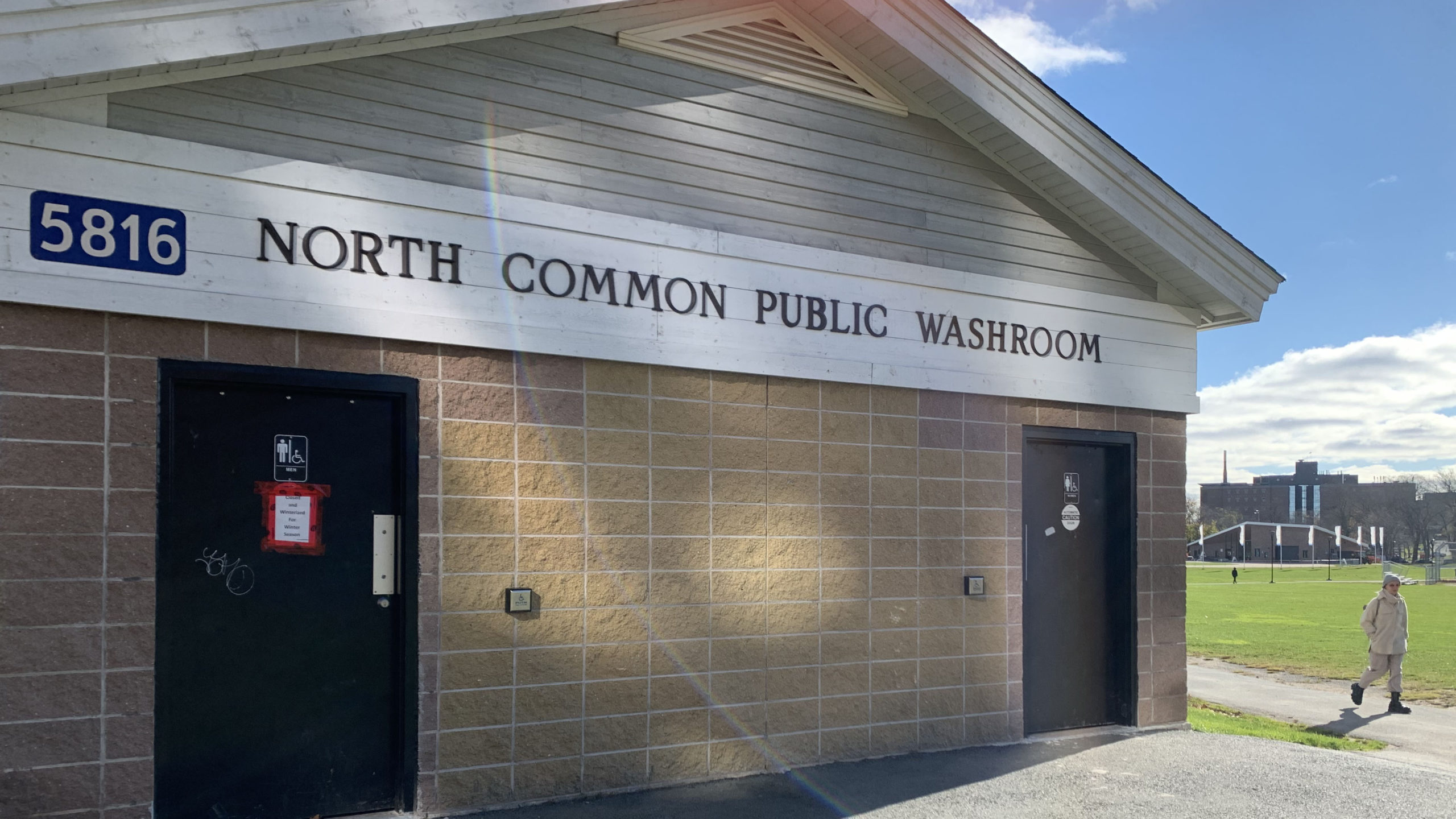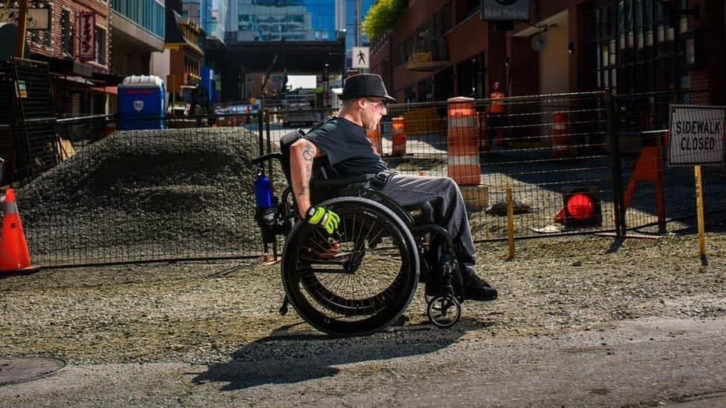Halifax public washrooms still not universally accessible
Universal washrooms mean a gender-neutral space and access for people with disabilities

caption
A sign on the North Common Public Washroom reads "Closed and winterized for winter season."Need to go? Look around Halifax and you’ll eventually find a public washroom to do your business.
Now imagine yourself in a wheelchair. Different story.
“Everyone needs to urinate, regardless of ability. People pee,” Victoria Levack said.
To Levack, the spokesperson for the Disability Rights Coalition of Nova Scotia, and a wheelchair user, the arguments against putting money into universally accessible washrooms are “old and repetitive.” Related stories
The coalition advocates for more funding to provide community supports for people with disabilities.
“’It’s a lot of work and a lot of money,’ and I’m like, so? Do it.”
Of 42 municipally maintained public washrooms, 18 are not universally accessible, according to an open data set from Halifax Regional Municipality. This data set includes washrooms located in parks, transit and ferry terminals, as well as Halifax Public Libraries.
Halifax has “a long way to go” before it becomes fully accessible, said Brian George, also a wheelchair user.
George moved to Halifax in 2014. When he arrived, George familiarized himself with all the universally accessible washrooms in his new neighbourhood near Spring Garden Road.
“As a wheelchair user in a city that, let’s face it, is not accessible, it’s one of the things I felt that I had to do,” George said.
“They make decisions sometimes about accessibility, but they don’t talk to us. The people in the city that live with disabilities, and there’s a lot of us, we’re the experts. We know what we’re doing. We know what we need,” George said.

caption
Brian George in his wheelchair on Grafton Street in Halifax.Towards the beginning of the pandemic, the only accessible public washroom George had access to was a porta-potty behind the Halifax Central Library.
“It has been multiple times where I’ve literally had to wheel myself all the way back to the library just so I could use that one washroom,” George said.
In 2017 the Nova Scotia house of assembly passed the Accessibility Act, a law designed to make the province completely accessible by 2030.
“We’re all very tired,” Levack said. “We’ve been fighting this for a long time.”
On a trip to London, England, Levack noticed that the city made accessibility possible. If an old city like London can figure it out, so can Halifax, Levack said.
“The municipality is currently in the process of auditing all municipal buildings for accessibility and the availability of universal washrooms,” said HRM spokesperson Ryan Neary in an email.
“These audits will be used to create a capital budget plan, which will work to meet the goal of making Nova Scotia accessible by 2030 – as outlined in the Accessibility Act,” said Neary.
This will also be guided by the Accessibility Strategy, approved by regional council in May. The strategy calls for the implementation of Rick Hansen Gold standards when it comes to facilities accessibility.
Exactly how much change has been made so far is unclear.
“Everyone deserves the right to go to the bathroom when they need to go,” Levack said.

